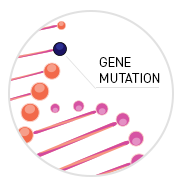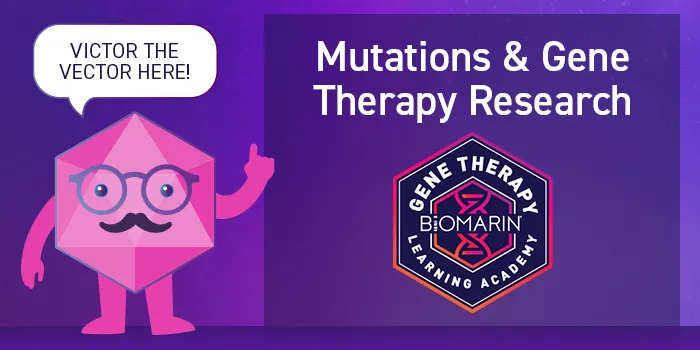
SO, WHAT EXACTLY IS A GENE?
Excellent question! Genes are tiny pieces of DNA, and their job is to provide instructions to help make proteins. The role of proteins is to do important things in the body like determining our traits (eg, hair color, eye color), repairing tissues, and helping blood clot.
For genes to work the way they were meant to, the components of the DNA need to be present and in the correct order. But sometimes change happens.

WHAT HAPPENS WHEN GENES MUTATE?
A gene mutation is when an unexpected change happens to a gene. They can be passed down from parent to child or happen randomly. Sometimes a single gene mutation can cause genetic conditions like cystic fibrosis, Huntington’s Disease, or hemophilia.
In hemophilia, a mutated gene affects the body’s ability to produce a protein called Factor VIII (for hemophilia A) or Factor IX (for hemophilia B). These proteins are needed to make blood clot, and when there’s not enough of them, bleeding can be difficult to stop.
CAN GENE THERAPY RESEARCH HELP SOLVE THE PROBLEM?
The goal of gene therapy research is to introduce working gene DNA into the body. Researchers are investigating whether these genes can give the body instructions to make a protein that is missing or not working correctly, as well as the potential side effects this may cause.
Gene transfer therapy introduces a working gene into the body to see if it can make a protein that is missing or mutated. It might sound like science fiction for a one-time treatment to help the body do what it was meant to do all along, but that’s exactly what researchers are aiming to find out. One day, gene therapy research may offer people living with genetic conditions innovative treatment options.
No gene therapies for hemophilia A or B have been approved for use or determined to be safe or effective.


Brought to you by:

© 2022 BioMarin Pharmaceutical Inc.
All Rights Reserved. US-HEM-00104 06/22


